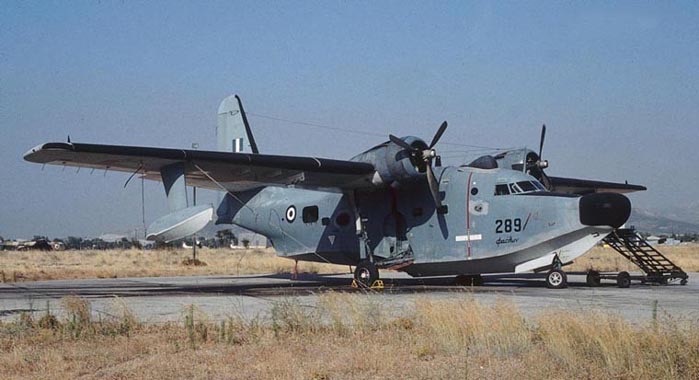
The situation in Cyprus had brought Greece and Turkey, both NATO members, to the threshold of war. In the spring of 1968, a military junta overthrew the elected government in Greece and established themselves in power. Tension between the Arabs and Israel was growing and would eventually lead to war. The United States was becoming heavily involved in Vietnam. The Soviets took advantage of the situation to enhance their presence in the Mediterranean area. Obscured by these events the growth of the “Piati Eskadra”, the Soviet Navy 5th Fleet, went almost unnoticed. Their ships no longer relied solely on the friendly ports of Latakia in Syria and Alexandria in Egypt. On the east and west of the island of Crete, marginally outside the Greek territorial waters, two large anchorages for the Russian warships were established!
The problem was recognized as serious, demanding a solution. The first step was to strengthen the U.S 6th Fleet. The second, to adjust NATO planning to the new situation. Two NATO members, Turkey and Greece were designated to assume a major role in meeting the challenge. Turkey controlled the Marmora straits, through which the Soviet ships were passing as they came out of the Black Sea into the Mediterranean. In the event of a crisis, Turkey could prevent the ships from transiting the straits. Greece, near the territory of which the Soviet fleet anchorages lay, was assigned the surveillance of the Soviet fleet and, if necessary, to be able to attack them. Surface ships were available and operated from various naval surveillance centers. The problem was the submarine threat. It was recognized that the best way for detecting and fighting submarines, during this period, was from the air.
Greece had no suitable aircraft for this purpose and in order to meet the challenge new defense procurements had to be made. The solution, however, was not straight forward. Almost all the armament procurements until then were through NATO using U.S funds. Although the financial problem was resolved the political obstacles were quite another matter. The United States Congress, because of the military dictatorship in Greece, had demanded President Johnson initiate and enforce an arms embargo. Under this embargo, deliveries of F-5 fighters and discussions for the sale of C-130E transports had been cancelled. The solution to the problem came from a completely unexpected quarter. Leonid Ilich Brezniev!
In August 1968, the Soviet forces rolled into (then) Czechoslovakia in order to put an end to the so called “Prague Spring”. The democratic freedoms of the Greek citizens became a secondary consideration within the U.S Administration and NATO. Primary danger came from Soviet aggression and it had to be tackled. With this in mind, the Greek embargo was circumvented.
At this time, the Kongelige Norske Luftfosvare or Royal Norwegian Air Force was in the process of changing its anti-submarine aircraft. Because of the Soviet nuclear submarine threat Norwegian ASW capabilities were in the process of being upgraded. The first P-3 Orion arrived in January of 1969. It was decided, that as NATO assets, the Norwegian aircraft that were being replaced could be transferred to Greece. The Greek authorities had no objection as it represented a break in the embargo.
The aircraft in question were none other than the venerable Grumman Albatross. These were amphibians that had been constructed in 1951 and ’52.Some of them had started life as Grumman SA-16A-GR and others as SA-16B-GR.All had been modified to SA-16B when delivered to the USAF where they served in a search and rescue role until 1960. They were modified for the ASW role and in 1961 and ’62 were transferred to Norway.
Two Norwegian squadrons were equipped with the Albatrosses; the 330 Squadron flying from Sola near Stavanger, and 333 Squadron in Andøya in the north of Norway between Narvik and Tromsø. Their role was not limited to the ASW and SAR but to other rather unusual duties. These included medevac, postal service to remote areas, ice and polar bear observation. They were not high time aircraft and because of the events taking place in the Mediterranean it was decided to inspect, upgrade, and repair as necessary as expeditiously as possible. This was done in Germany and the first of twelve HU-16 ASW aircraft arrived at the 112 Wing at Eleuis Air Base in February of 1969.
Training of the air and ground crews started immediately. Flying training was undertaken by personnel of the U.S Coast Guard. During March nine more aircraft arrived, while on August 1 of the same year the 353 Naval Co-operation Squadron was established. All Albatrosses came under this squadron.
By the end of 1969 the first part of training was completed and in the spring of 1970 operational training started. For the pilots and the ground crew it was undertaken by the U.S Coast Guard as noted above, while for the anti-submarine equipment operators the instructors were from the U.S. Navy. It was a new experience for the Hellenic Navy men who were occupying the seats of tactical co-coordinator, radio operator and anti-submarine equipment operator. The first was an officer and the other two warrant officers. The rest of the crew pilot, co-pilot and flight engineer were from the Hellenic Air Force.
